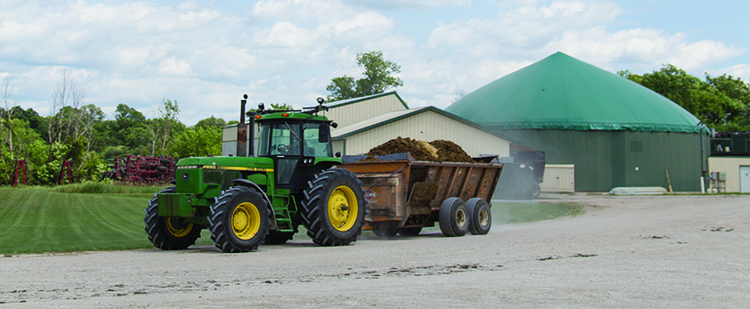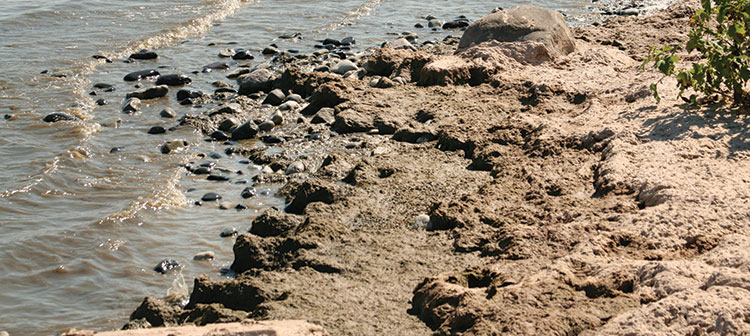
Not only is the area a great place for dairy cows, it also has ample water supplies and karst topography. It’s this combination of water and shallow soils mixed with rock outcroppings from the Niagara Escarpment that has caused concern among some area residents. Most of the concern centers on the karst topography’s fractured bedrock that may allow manure and associated nutrients to move more easily through the soil’s profile and potentially pollute groundwater. In some cases, runoff has been linked to algae blooms and tainted wells sprinkled throughout the rural countryside.
Juggling profitability and perception
“Dairy farming has changed a great deal in recent decades,” explained Ben Brancel, who serves as the secretary of Wisconsin’s Department of Agriculture Trade and Consumer Protection (DATCP). “In past generations, dairy farmers mainly concerned themselves with running a profitable business,” said the one-time dairy farmer. “These days, dairy farmers not only must juggle profitability, they also need to deal with public perception. In fact, dealing with public perception has become a must.”
Part of that perception centers on manure.
“Solid manure and liquid manure give two entirely different visuals,” noted Brancel. “Even though both solid and liquid manure may distribute the same nutrients, liquid manure gives the appearance that more manure is being applied to land. That generally isn’t the case, however.”
That’s just part of the public perception issue.
Some critics of Wisconsin’s dairy industry have concerns about water quality. In particular, the perception centers on nutrient and pathogen loads found in nearby water supplies.
Unprecedented collaboration
Given these circumstances, Wisconsin is about to embark on a project unlike anything done in state history or perhaps the nation.
“Could three state agencies work together to help resolve the situation?” asked Wisconsin’s Republican Governor Scott Walker as he jump-started the process.
That’s when the Public Service Commission, the Department of Natural Resources, and DATCP leaders began holding joint meetings to discuss a potential path forward. While each state entity has different goals, these agencies have a collective interest in finding a workable solution for dairy farmers and neighboring residents alike.
That’s what eventually led to a request for the proposal titled “Integrated Anaerobic Digester System Program.” And with that request came $20 million in economic incentives. Much of those financial incentives came from Focus on Energy, which is a public-private partnership involving the greater energy sector. In addition to the $20 million in financial assistance, the three agencies also bring additional expertise to the table.
DATCP’s interest centers on manure handling and storage systems. Currently DATCP supports nutrient management efforts in the state by training farmers and crop consultants to develop nutrient management plans. The agency also trains trainers and funds training at the local level. DATCP also has engineers who specialize in storage systems and conservation practices.
The Department of Natural Resources focuses on supporting technology for liquid-solid separation, waste homogenization from on-farm and food waste sources, pathogen reduction, along with water treatment and discharge technologies.
Why biogas?
Meanwhile, the Public Service Commission and its Focus on Energy partnership will focus on renewable energy. Unlike past bioenergy projects that looked at electricity, this effort will promote biogas. And with it, biogas conditioning, compression, piping, transportation, and storage. The focus on biogas, as compared to bioelectricity, is mainly due to falling payment rates from utilities for electricity. Biogas is far more portable than electricity is. So even though the involved utilities may one day decide to no longer purchase this compressed on-farm by-product, other green-minded companies could buy it to fuel their fleets.
Before moving forward with the three-agency initiative, the Public Service Commission reached out to energy consumers and asked, “What would it take to accept a quality fuel in your system?” Brancel recalled.
Most answered back, “Fuel would need to be scrubbed to meet standards in order to be accepted,” Brancel summed up. It’s that scrubbing process that makes the fuel less corrosive and more usable.
The Integrated Anaerobic Digester System Program will involve both dairy farms that are Concentrated Animal Feeding Operations (CAFOs) and smaller dairies, too. Successful bids may come from one company or a consortium of businesses. To help answer questions, there was a pre-proposal seminar in February where companies and farmers alike could get questions answered by state officials.
Final applications are due May 1 with in-person presentations slated two weeks later. By early June, winning applicants will be notified and have two weeks to accept or decline the state’s award. Projects that are operational by December 2018 will receive favorable evaluation and scoring for the incentive funding.
The time line from start to completion is just one of many criteria for scoring submitted applications. In all, 350 points are possible and applications must score 235 to even merit consideration. While scoring falls into eight categories, there are some must-have items. Without achieving a minimal score of 20 to 25 points in five of those eight categories, the application will be a no-go. The project must generate biogas, treat water, condense nutrients, and be located on farms in the Lake Michigan basin or near thin soils or karst topography.
“There are some strong requirements for energy, nutrient condensing, and environmental remediation,” explained Brancel as he paged through the joint agency document totaling 34 pages in length.
“We envision that a system, once built, will be professionally managed on-farm by an outside company,” stated Brancel. “While the proposals would include some existing technology, we want to encourage new technology that may be close to economically viable but needs some financial incentive to get started,” said Wisconsin’s ag secretary. “The completed system must be financially viable and have a long-term life span to be successful.
“From a governmental standpoint, the three agencies recognize each other’s interests,” he said. “We must work together for this project to be successful. Governor Walker is very interested in the project’s progress over time.”

Big picture thoughts
“There is potential to pipe a number of products,” suggested Brancel. “Every community sits on a piping network, why not farms?” he asked rhetorically. “There could be an opportunity to market by-products far beyond power companies.”
There is no guarantee there will be a winning proposal. “If proposals don’t measure up to the scorecard in the plan document, we will not award the $20 million grant money. There must be some serious work done to create an effort that makes a difference,” said Brancel.
“At the same time, we don’t want the opportunity for a potentially successful venture to be questioned to death, either,” said Brancel. “We must rely on science and technical expertise to give us the best professional opinion on the submitted applications.”





